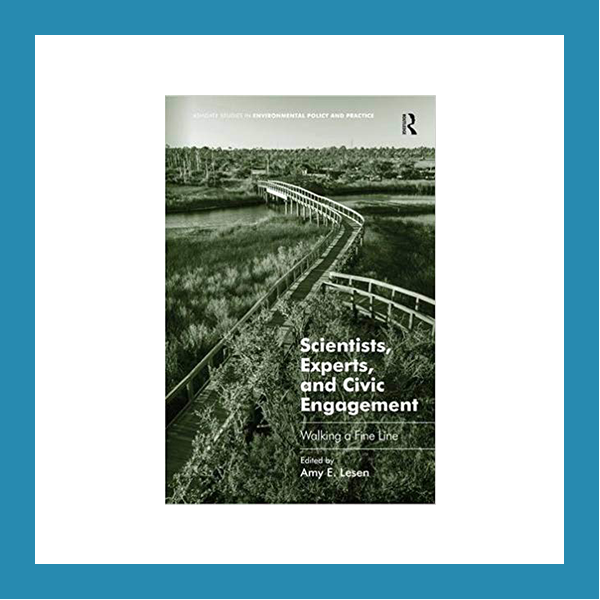Discussed in this review:
The World: A Brief Introduction. By Richard Haass. Penguin Press. May 2020. ISBN: 9780399562396. 400 pages. Paperback, $18.00.
Author Note
Steven Elliott-Gower, Department of Government and Sociology, Georgia College and State University.
Correspondence concerning this book review should be addressed to Steven Elliott-Gower, Associate Professor of Political Science, Department of Government and Sociology, Georgia College and State University, 3-19 Arts & Sciences Building, Milledgeville, GA 31061. Phone: (478) 445-1467. E-mail: steve.elliott-gower@gcsu.edu
Richard Haass’s latest book, The World: A Brief Introduction, is ambitious, and largely successful. The author’s purpose is to “provide the basics of what you [the reader] need to know about the world, to make you more globally literate” (xvii). Central to the book’s success are its organizing structure and principles, the author’s vast foreign policy experience (and the perspective it lends), his lucid writing style, and, most importantly, his discipline in deciding what to include and what to leave out.
The book consists of four sections: “The Essential History,” “Regions of the World,” “The Global Era,” and “Order and Disorder.” The first section provides an overview of the history of international relations from the Thirty Years’ War (1618–1648) to the present—in an impressive 43 pages. This section offers some historical perspective on the book’s later content and highlights, more than any other section, Haass’s academic discipline. Some readers might wonder why, for example, Haass does not acknowledge debates about the evolution of national sovereignty or alternative theories about the origins of the Cold War. The answer is that the book is a brief introduction, and this section is an essential history. There is also the question of audience, which I will come back to later.
The second section, “Regions of the World,” reviews the recent history, geopolitics, and defining economic and political challenges of the major regions of the world—Europe, East Asia, South Asia, the Middle East, Sub-Saharan Africa, and the Americas. Those defining challenges include an aging population and the rise of right-wing populism in Europe, the increasing influence of China in East Asia, and Indo-Pakistani tensions in South Asia. Africa and the Americas, however, get relatively short shrift in this section.
The first two sections, which comprise half of the book, provide the historical and regional contexts for the third section, “The Global Era.” The section’s first chapter, on globalization, is followed by chapters focusing on the causes, consequences, and prospects for cooperation in the arenas of terrorism, nuclear proliferation, climate change, migration, cybersecurity, global health, trade, currency and monetary policy, and development. Here, Haass’s key arguments are convincing because he uses globalization as the organizing principle, framing it primarily as an economic force, but then examines terrorism, migration, etc., as manifestations of globalization.
The author’s aforementioned discipline notwithstanding, I found the chapter on nuclear proliferation to be a little narrow. The chapter might have dealt more broadly with weapons proliferation (including conventional weaponry) or weapons of mass destruction, or it might have included a paragraph or three (as opposed to a single sentence) on arms control. Of course, those with special interests in, say, international development or global health would no doubt have wanted to see more in those chapters as well.
The point is that this is a book for a general student audience, not for academic specialists. As someone who has spent his professional life writing about and practicing international relations, Haass (now the president of the Council on Foreign Relations) is concerned that, according to national surveys, many U.S. college students know next to nothing about the political-economic world that affects their lives.
This balanced, timely, clearly written, and neatly organized book would therefore be especially well suited to first- or second-year Introduction to Global Issues courses (or similar offerings). It would be less well suited to Introduction to International Relations (IR) courses since Haass eschews IR theory. However, having said that, there are plenty of references to IR concepts, such as sovereignty, deterrence, balance of power, and alliances (to name a few), throughout the book, especially in the “Order and Disorder” section, which details challenges to the post-war global order. Moreover, the book offers excellent suggestions for further reading and includes extensive endnotes.
By providing a foundation for global literacy (at least as defined by the author and his milieu), this book serves as a potential springboard for informed civic engagement with global issues—whether for citizens connecting the global to the local, voting in democratic elections, advocating for global causes, or decision making in globally connected organizations.
Finally, The World is part of an admirable and much-needed educational outreach effort by the Council on Foreign Relations which includes the World 101 and Model Diplomacy websites—valuable resources for students, educators, scholars, and practitioners alike.
Author
 Dr. Steven Elliott-Gower is associate professor of political science at Georgia College. He is faculty advisor to the Honors Global Civic Literacy Residential Learning Community, and former faculty advisor to Model United Nations and Model Arab League. He teaches international relations, global issues, national security policy (using Model Diplomacy role-playing simulations), and U.S. foreign policy, and is the author and editor of numerous books, articles and book chapters on weapons proliferation, including International Cooperation on Nonproliferation Export Controls. He has also designed and led study abroad programs around the world.
Dr. Steven Elliott-Gower is associate professor of political science at Georgia College. He is faculty advisor to the Honors Global Civic Literacy Residential Learning Community, and former faculty advisor to Model United Nations and Model Arab League. He teaches international relations, global issues, national security policy (using Model Diplomacy role-playing simulations), and U.S. foreign policy, and is the author and editor of numerous books, articles and book chapters on weapons proliferation, including International Cooperation on Nonproliferation Export Controls. He has also designed and led study abroad programs around the world.


